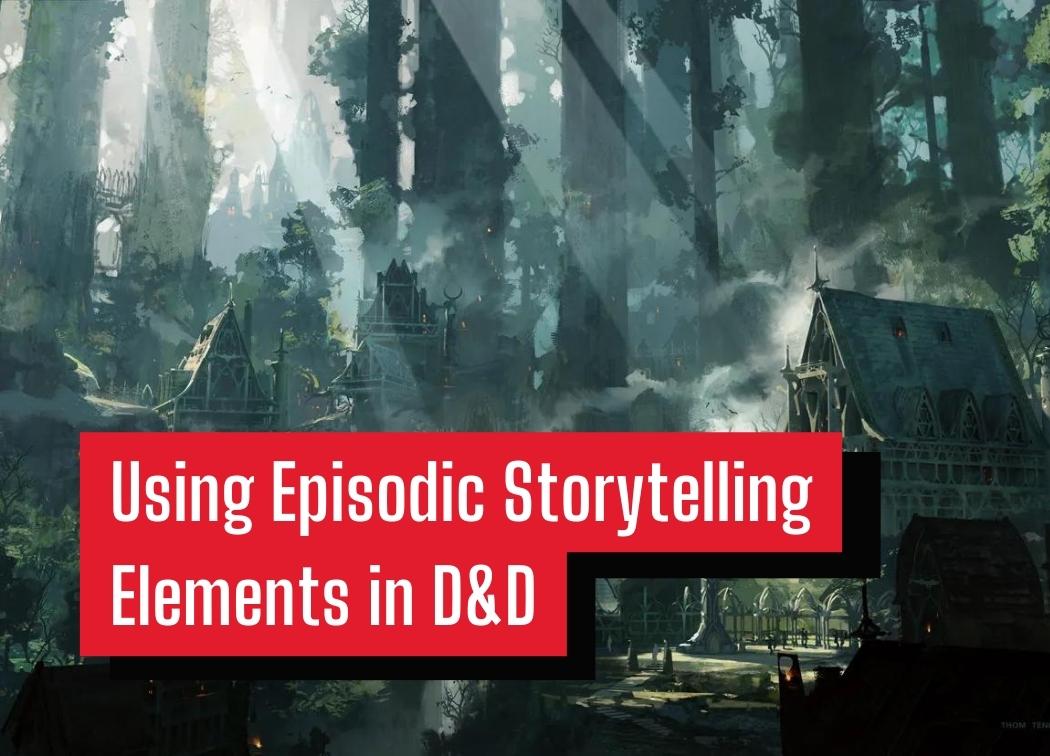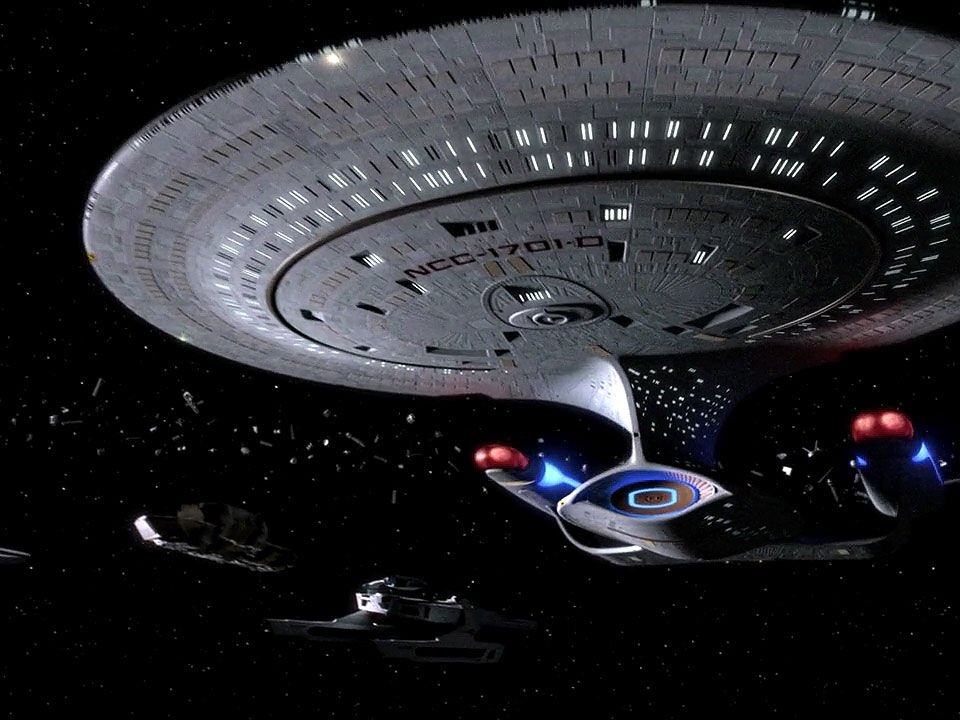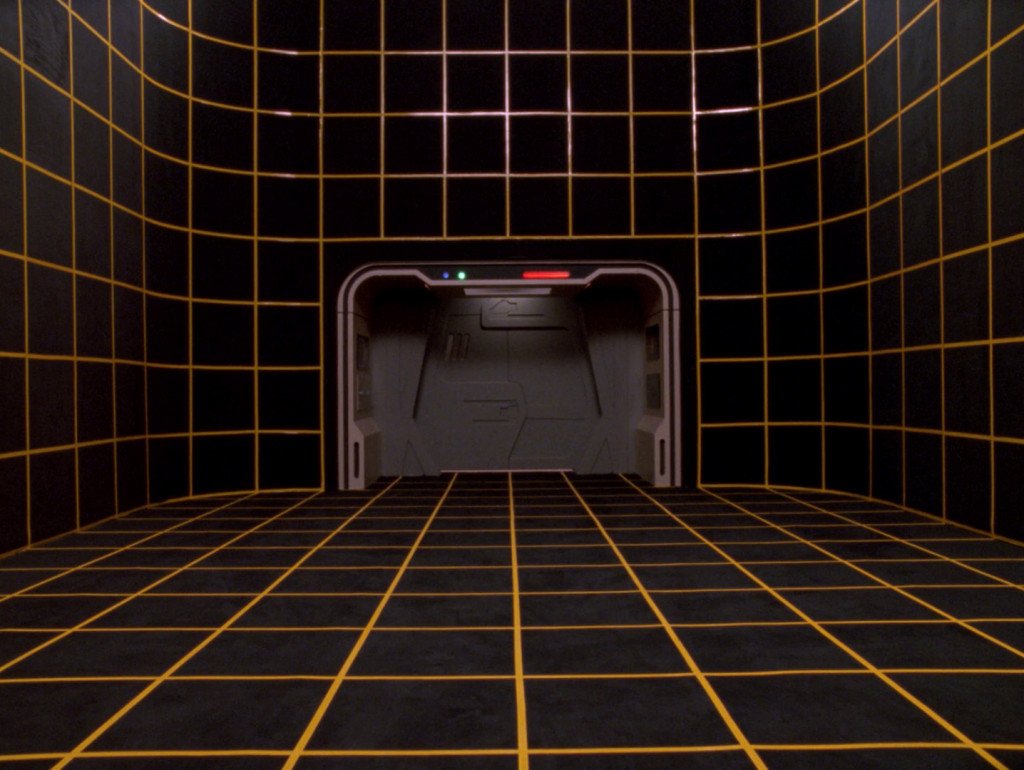Using Episodic Storytelling Elements in D&D

I’ve always had a soft spot for episodic storytelling and short stories. Something about the succinct plot lines that are wrapped up tightly with a neat bow speaks to me on a personal level. I’m sure it has something to do with my dad having Star Trek: The Next Generation on the TV 24/7 when I was growing up.
It’s funny, until last year I’d never watched the entire series cover-to-cover, but I’ve watched every episode at least once or twice throughout my lifetime. I’m not sure why, but I decided to go through the entire show in order and it was a blast. I kept up the momentum and proceeded to watch Deep Space Nine which has become one of my favorite TV series of all time.
However, the difference in storytelling methodology between the two is staggering. TNG is (mostly) episodic. Whereas DS9 is serialized.
I love both series and their respective methodology, but each has a very different vibe.
Throughout my Star Trek binge, I began to consider how you could utilize both storytelling methods in a D&D campaign. Most campaigns are serialized by default, but it just so happens that my current Adventurer’s Guild campaign lends itself well to a more episodic storytelling structure.
Let’s talk about my findings.

What is Serialized Storytelling?
Serialized storytelling is super common in TV series these days. Serialized storytelling is telling an overarching story in sequential order. Each episode is a piece of the puzzle, but you must watch every episode to understand the story.
Depending on the show the story could be told throughout the entire show or each season could be an entirely separate story. It could even be a mix of the two where every season has its plotline, but it all lends to a major overarching story or theme.
Regardless, the key takeaway here is that the story is told in sequential order, therefore it’s impossible to watch random episodes while still understanding the plot. At least on your first watch-through.
What is Episodic Storytelling?
Episodic storytelling uses self-contained stories. Each episode has a problem and by the end of its timeslot, the problem was solved.
It’s a satisfying way to tell a story, in my opinion, because it gives the consumer a full experience in a single sitting. You don’t need to binge a 10-hour series to see the full story play out.
Episodic storytelling is less common in TV series nowadays but was super common back when cable TV was the only avenue for watching TV. This had a huge benefit for viewers and TV stations since any episode of a series could air any given day and the viewer would still have a satisfying experience watching it.
The Limitations of Episodic Storytelling
While I do enjoy episodic TV series, they have limitations that make writing and producing them challenging.
Interestingly enough, these limitations or weaknesses of episodic storytelling are inversely the strengths of serialized storytelling. The two major ones I’m going to touch upon are the higher-level development of the characters and the overarching story of a series.
Long-Form Overarching Stories Don’t Work Well
Long-form overarching stories in an episodic series are doable, but it’s a difficult task. Think about it. You’re writing a bunch of unconnected short stories. It’s quite the task to figure out how each story will eventually bring a satisfying conclusion to an overarching story while still allowing the viewer to see them as individual stories.
Ergo, any sort of overarching story or plotline tends to be simplistic in an episodic series. Instead, episodic series will use a high-level theme that they’ll play around in and explore.
For example, TNG’s space exploration. Each episode explores a different planet or a problem with the ship. By the end of the episode, the crew of the Enterprise-D solves the problem and takes off on their next adventure.
Sure, there are interconnected storylines that span the course of a few episodes such as the Borg saga, but each piece is still self-contained and they’re certainly not long-term storylines.

Character Development is Difficult to Handle
Due to the difficulty and subsequent lack of overarching stories and plotlines in episodic series, long-term character development is a challenge to handle.
The intention of an episodic series is that the viewer can watch a random episode and understand everything. Ergo, the characters can’t change much. The viewer needs to understand the character and know what they would do in a given situation be it episode 1 or episode 100.
However, this isn’t the primary issue that character development has in an episodic story. The main issue is that the characters have limited opportunities to grow over time due to the disjointed viewing of episodes and telling of the story.
Characters in an episodic story certainly can have some character growth and development, but it tends to be small. You wouldn’t see a sweeping change where the character’s demeanor and philosophy change in the middle of the series since that would cause a ton of confusion if you were to watch episodes out of order.
Why Would You Want An Episodic D&D Campaign?
I don’t want to come off as too negative regarding episodic storytelling so let’s talk about the benefits of it and why you’d want your D&D campaign to be more episodic.
First of all, due to the nature of D&D, your campaign can’t be truly episodic. It’d be tedious and frustrating to be jumping between dates and events in the campaign and PC levels. More importantly, it wouldn’t be overly beneficial or more importantly, fun.
Instead, what I think of when I envision an episodic D&D campaign is what my current campaign consists of. A singular campaign that is sequential in order where the party chooses a different quest to go off on. Each quest is its own self-contained story that may or may not lend itself to overarching storylines.
The key benefit that I’ve enjoyed as the DM is that if a player or three is missing, the story carries on. Their characters hang back at the guildhall or go off to a nearby town and enjoy some downtime activities while the rest of the group goes off on their quest.
If the adventure spans multiple sessions then perhaps they were side-tracked along the way and meet up with the party later in the adventure.
Admittedly it’s a West Marches-style campaign, but with an adventurer’s guild coat of paint slapped on it.
The campaign is loose and flexible. We can continue to move the story forward (or even play alts) without full attendance, and the missing players won’t miss out on much if they’re absent for a quest. For me, this is an enormous boon and primarily why I’ve enjoyed the episodic elements of this new campaign.
How I Implemented This Campaign Style
For my campaign, this more episodic campaign format was the effect rather than the cause. Each in-game week the adventurer’s guild allows the party to pick a mission from a pool of level-appropriate quests. They then set off to complete their mission and report back at their leisure.
These quests might take them a couple of days or they could take weeks of in-game time. They can also span multiple sessions depending on the party’s choices and how lengthy I’ve made them.
However, each quest is designed to be a self-contained episode in the series that is the campaign. There is a single problem that’s presented and by the end of the quest, it’s confronted. I say confronted because there’s no guarantee that the party succeeds, but they’re at least assuredly interacting with the story.
If I wish to, I can go back and take the building blocks of previously completed quests and use them to assemble new quests, problems, and story beats further on in the campaign. Yet, if I don’t wish to, I can at least rest easy knowing that the individual story was fully played out without any loose threads leftover.
Conclusions
Is pure episodic storytelling possible in a D&D campaign?
Sure.
Forgoing having sessions be run in sequential order in the campaign world would require a lot of extra effort from the DM to convey and the players to understand. Simply put, it’s easier for everyone to envision each session happening in order.
Would it be enjoyable?
Not in my opinion.
While it’s possible to run a campaign in that manner, it’d quickly feel like a series of out-of-order one-shot adventures rather than an interconnected tale.
To me, this is the worst of both worlds for the players. The players don’t get to enjoy their long-term characters since they’re jumping all over the place. Conversely, they don’t get to enjoy the freedom of trying out different characters and ideas that one typically does when playing in a one-shot.
Can we take elements from this style of storytelling to improve our D&D campaigns?
Yes!
Using quests as standalone stories has opened up a bunch of new avenues for me. For instance, I can go back and expand upon stories that the table enjoyed. Yet, there’s no pressure to continue storylines that I didn’t vibe with because they’re already wrapped up.
We still have an overarching plot, but the quests work as swappable pieces in that plot rather than a singular thread that’s woven into a story.

Great suggestions. Personally, I think episodic play ends up being superior for D&D in a number of ways. For starters, it allows for easier adventure planning: a one-and-done story takes much less time to plan and plot than a full story arc. The episodic adventure can likewise be introduced fairly easily; essentially, a drag-and-drop dungeon.
Another advantage of episodic play is that it doesn’t require continuous play. If you ever take a few weeks between games, the momentum of a story arc tanks. Episodic play doesn’t have this particular issue because every story is new.